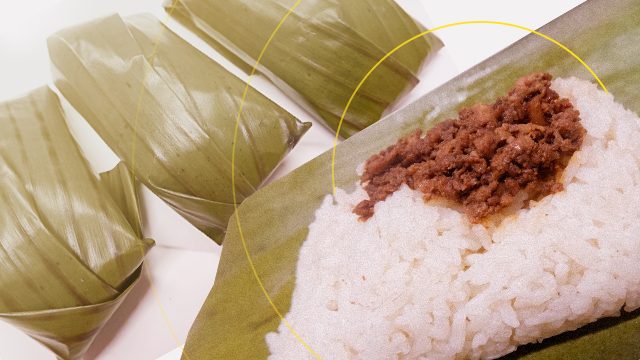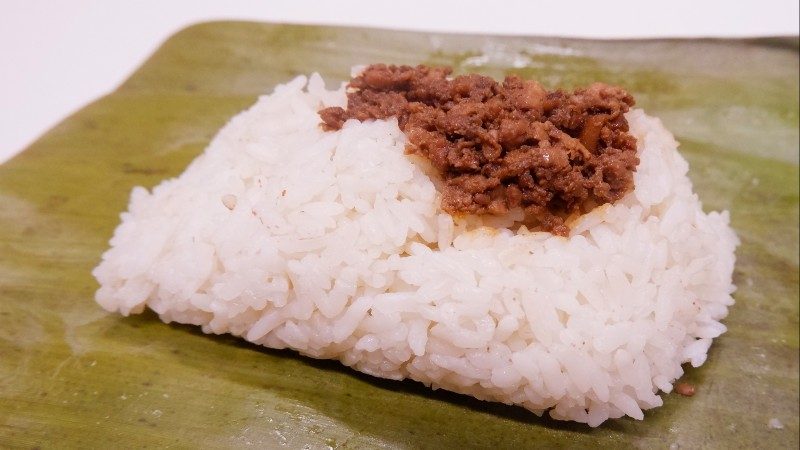SUMMARY
This is AI generated summarization, which may have errors. For context, always refer to the full article.

What defines a millennial more than their healthy, go-local, environmentally-conscious eating habits? As millennials, we’re prone to working long hours preparing for deadlines and meetings. We eat on the go and sometimes even during work hours.
As a millennial on the daily grind, I am always on the lookout for foods that can also promote local cuisine and culture.
While working in the Autonomous Region in Muslim Mindanao (ARMM) and living in Cotabato City for the last seven years, there is one food that stands out for me: Pastil. This native delicacy has been a part of my day-to-day life. It’s an ubiquitous food, seen in the heart of Central Mindanao, in Cotabato City.
Pastil can be eaten as is, or with other dishes. It’s wrapped in banana leaves and contains rice with chicken flakes on top. It’s a classic dish, known as a native Maguindanao recipe.
Pastil isn’t just for gatherings, however – it’s for any meal. It’s cheap and affordable, with prices ranging from 10 to 18 pesos, depending on its size.
For those on a tight budget, it can be eaten for breakfast, lunch, or dinner to get through the day. It’s a full meal, wrapped in one.
The Pastil is made by cooking rice along with the chicken sautéed in vinegar and soy sauce. It’s perfect if you have leftover roasted chicken (lechon chicken), which you can add vinegar and soy sauce to. It’s very simple and easy to make, and it’s delicious, too.
Or you can make it from scratch.

To make pastil, you first cook the rice, then set it aside. You can then slice the chicken, and boil until the meat is tender. Make it into flakes. Then sauté onions, and add the flakes. After that, add the vinegar, then a few minutes later, the soy sauce. There, you have the chicken flakes to go with the rice.
To top it all off, you take the boiled rice, and in the middle, top it with the flakes of sautéed chicken, then wrap it with a banana leaf. And voila! You have a delicious Pastil.
Pastil transcends social status. It’s available in almost every corner of Cotabato City, from stalls to restaurants to canteens. The whole city knows about Pastil and eats Pastil, from businessmen to professionals to the working-class — the dish brings everyone together to enjoy a tasty meal.
Pastil has become my go-to food. It’s with me when I take a break from work to when I have to eat a fast dinner. It’s easy to get your hands on, because it’s sold everywhere. It’s also a better alternative to fast food, because it’s not greasy or fried, and you can cook it from the comfort of your home.
Central Mindanao and the Maguindanao surely has something to offer when it comes to food. The pastil is a classic Moro dish that has been unique to Mindanao for ages. It’s the one go-to food that we can’t live without.
When a pastil has been sealed, it’s been sealed with our love for one another. – Rappler.com

Amir Mawallil is the author of A Constant Retelling: Exploring the Bangsamoro Narratives and works as the public information director of the Autonomous Region in Muslim Mindanao. Amir is an avid foodie and a frustrated chef, who has traveled all of Mindanao in search of local culinary wonders.
Add a comment
How does this make you feel?
There are no comments yet. Add your comment to start the conversation.